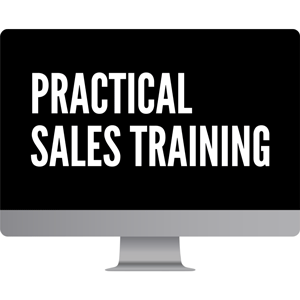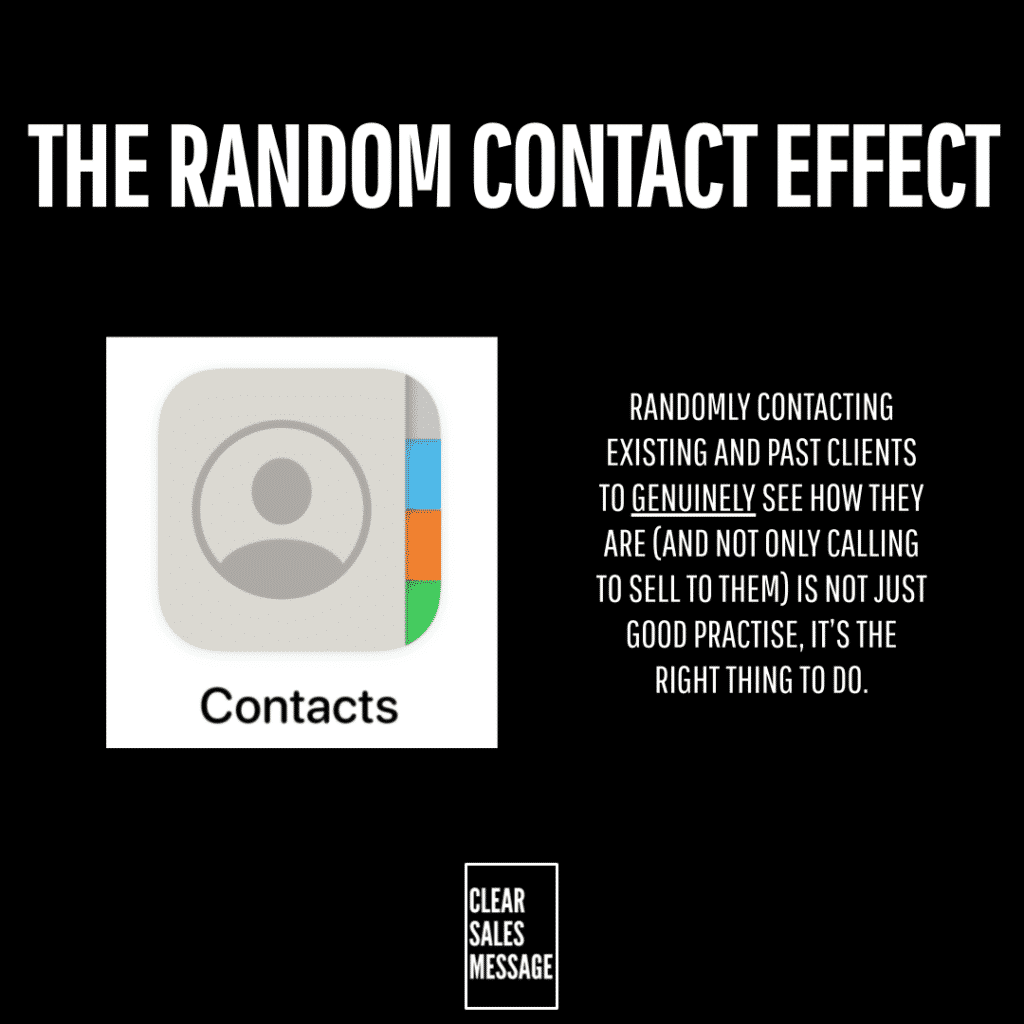Understand Your Buyer > How To Keep Your Clients Happy > The Random Contact Effect
What is it?
The Random Contact Effect is all about making contact with existing and past buyers to see how they are and not to sell to them.
Why does it work?
It works because often we only speak with our clients when we want something.
As sad as that is to say, it’s often true and it doesn’t help the already poor reputation that selling has. By contacting people with no agenda other than to see how they are, it focuses on building relationships and creating trust – not just speaking with someone because you want something.
At the end of the day, we are all people in this world doing the best we can to get by. We all have hopes, dreams, fears, families, goals and challenges. Creating genuine connections with those around you is beneficial to your wellbeing and your mental health – it also makes the person you are calling feel valued and connected.
How can you use it?
One of the simplest ways to do this and something I have been doing for many years, is to randomly select a name from your contacts list and call that person. It doesn’t matter if they are a current or past client – pick a name at random. When calling that person, the “reason for the call” is that their name came up on your phone so you wanted to check in with them.
Whilst I don’t advocate “checking in” as a follow up strategy, checking in and seeing how people are genuinely because you care is entirely different. But it must be genuine. If you don’t care about or dislike the person who’s name has come up, pick another name.
Consider making 1 of these calls each lunchtime for the next few days and see how you feel and how your contacts respond. If you were called out of the blue because somebody was thinking of you, how would you feel and how would you respond?
Like this kind of stuff? Want more?
Then Practical Sales Training™ is for you…
Action focussed, affordable sales training
for entrepreneurs and small business owners.
Brought to you by James Newell

